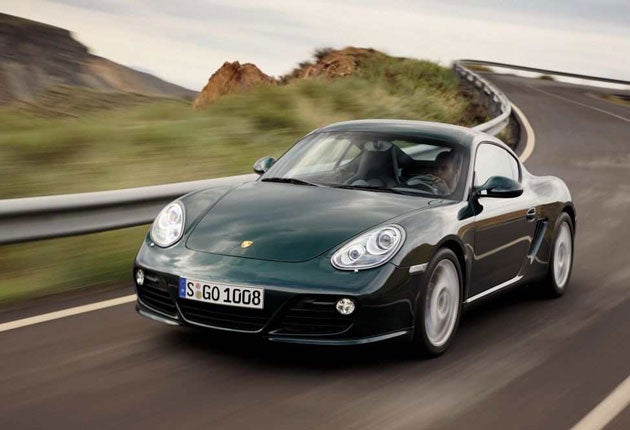Porsche Cayman S
The new Cayman S puts the 911 in the shade in so many ways. But can it win over those diehard purists?

Your support helps us to tell the story
From reproductive rights to climate change to Big Tech, The Independent is on the ground when the story is developing. Whether it's investigating the financials of Elon Musk's pro-Trump PAC or producing our latest documentary, 'The A Word', which shines a light on the American women fighting for reproductive rights, we know how important it is to parse out the facts from the messaging.
At such a critical moment in US history, we need reporters on the ground. Your donation allows us to keep sending journalists to speak to both sides of the story.
The Independent is trusted by Americans across the entire political spectrum. And unlike many other quality news outlets, we choose not to lock Americans out of our reporting and analysis with paywalls. We believe quality journalism should be available to everyone, paid for by those who can afford it.
Your support makes all the difference.This is the best car Porsche currently makes. Fine, you think, the punch line is blown and there's no point reading any more. Don't go just yet. I want to tell you why the Porsche Cayman S is so good, and of the paradox which hints at why we don't see more of them. But why now?
Because the Cayman, both S (from £44,100) and lower-powered non-S (from £36,102), has just had an update similar to the one recently undergone by the larger, more expensive 911. Both ranges now have a new, direct-injection version of Porsche's flat-six engine design.
In the 911 the engine can be 3.6 or 3.8 litres. In the Cayman it's a 2.9 or, as here in the S, a 3.4. Power for this one rises from the 295bhp of the previous Cayman S to 320bhp yet it uses less fuel and emits less carbon dioxide. All Caymans now sneak under the 225g/km beyond which road tax gets very expensive.
The other main change is the option of Porsche's seven-speed Doppelkupplungsgetriebe, shortened to PDK and translated as, yes, Porsche double-clutch gearbox. This replaces the Tiptronic automatic, a transmission whose responses were sufficiently detached from a driver's instant intentions that it sabotaged much of what makes a Porsche the driving machine it should be. The PDK has already appeared in the 911; while Porsche might seem to be coming late to the double-clutch idea, it did, in fact, invent the system back in the 1980s.
New engine, new transmission. Fitted to the 911, they have not been a total success. That's because the ultra-efficient engine has lost some of its aural character and the transmission's plasticky buttons on the steering wheel are confusing to use.
Will the same fate befall the Cayman, until now perhaps the most perfect Porsche ever made? To reiterate why this is so, it's because the Cayman is compact, quite light by modern standards, looks in proper proportion with itself – unlike a modern 911 which has huge, droopy overhangs – and has its engine mounted ahead of the rear wheels instead of behind them. All of which means the Cayman steers with transparent precision and has an easy, confident, inertia-free balance in bends like a good racing car.
The new Cayman is slightly faster, making it as quick as you could ever reasonably want a car to be. The PDK works very well, shifting with near-perfect smoothness either automatically or, via those buttons, exactly when you wish. Sport mode speeds the shifts and sharpens the accelerator response; it also makes the suspension firmer if you have the active-dampers option, but you can revert to suppleness by pressing another button.
A further option, the Sports Chrono pack, brings a built-in stopwatch and a Sports Plus setting which makes gearshifts ultra-quick but a bit abrupt. Should you prefer your Cayman with a normal manual gearbox, as I would, you just get the stopwatch.
And the engine? Much attention has been lavished on the exhaust note, resulting in a crisper, deeper sound than a 911's. These things matter. Subtle changes to steering and suspension improve sensitivity, and there's the option of a limited-slip differential for optimum traction out of tight, slippery corners. Subtle changes to lights (projector-lens headlights and LED tail lights), bumpers and tailpipes are missed unless you have an old Cayman handy for comparison.
It's a two-seater only, but there's luggage space aft as well as under the bonnet. It all adds up to a Cayman better in many ways and worse in none, so it's still the best Porsche. But there are those who would have a 911 over a Cayman. They're missing a treat.
Join our commenting forum
Join thought-provoking conversations, follow other Independent readers and see their replies
Comments